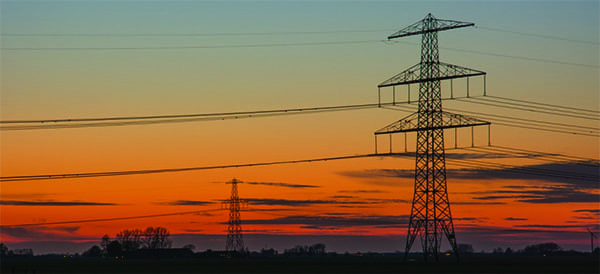How the Internet of Things May Help Power the Future
Utility poles are the literal backbone of the electric utility industry. With an estimated 180 million or more in the nation’s power grid, it’s not hard to imagine the monumental task associated with assessing and maintaining the integrity of the U.S. power system.
Whether worrying about woodpeckers, vandals, or wind and ice storms, the responsibility to keep poles and transmission systems (Figure 1) healthy falls to a vast team of maintenance workers and inspectors, who will soon have the cloud to thank for making their jobs safer and their findings more accurate.
Utility poles are currently inspected by workers performing tests to check for damage or decay. The tests used to determine a pole’s stability and structural integrity can be time-consuming, expensive, and potentially dangerous. Today, though, with the power of Internet of Things (IoT) technology, utility companies can be more efficient with their inspections. By connecting “smart” sensors to the poles, utility companies can gather previously unavailable data, allowing for real-time decision-making to improve performance and safety.
Ameren, a large electricity and gas service provider in the Midwest, is taking advantage of the IoT trend in its partnership with Atomation, a U.S.-based company that connects assets to the internet with a flexible, robust, and scalable IoT platform. The two companies have launched a pilot program in Champaign, Illinois, that connects utility equipment to the internet, allowing Ameren to be proactive in pole maintenance and repair.
By attaching credit card-sized inertial measurement unit (IMU) sensors to utility poles, all movement beyond-the-norm is monitored: left to right, up and down, and back and forth. The customized nature of the measurement is important. By using Atomation’s edge computing, and reporting only the “exception” occurrences, data and battery life of the sensor is maximized. The monitoring hub is not inundated with unnecessary information; however, it is alerted in real time of shifts that should cause concern.
Though utility companies are legally required to send inspection crews to physically check on poles, IoT technology can increase predictive maintenance ability, while decreasing the chance for injury—and also saving time and money.
A Bureau of Labor Statistics 2015 report said electrical power-line installers and repairers have one of the 10 most dangerous jobs in the country. In addition, utility companies spend hundreds of dollars per hour to perform time-consuming inspection tests, including:
■ The hammer test. The inspector starts at the bottom of the pole, strikes the pole sharply with a hammer, and continues every few inches for about six feet to test the structural stability.
■ The bore test. If any points of probable decay are found, the inspector bores into the pole with a drill to assess damage.
■ The Resistograph test. Inspectors use a Resistograph to drill into poles to look for internal holes or decay.
The exceptional flexibility of the latest sensors allows them to be used in many facets of industry. Sensors may be installed to detect gas leaks, control power, or remotely monitor transformers and switches. They save time and improve worker safety by removing the need for a human in sometimes remote or volatile situations. ■
—Guy Weitzman is CEO and co-founder of Atomation.
